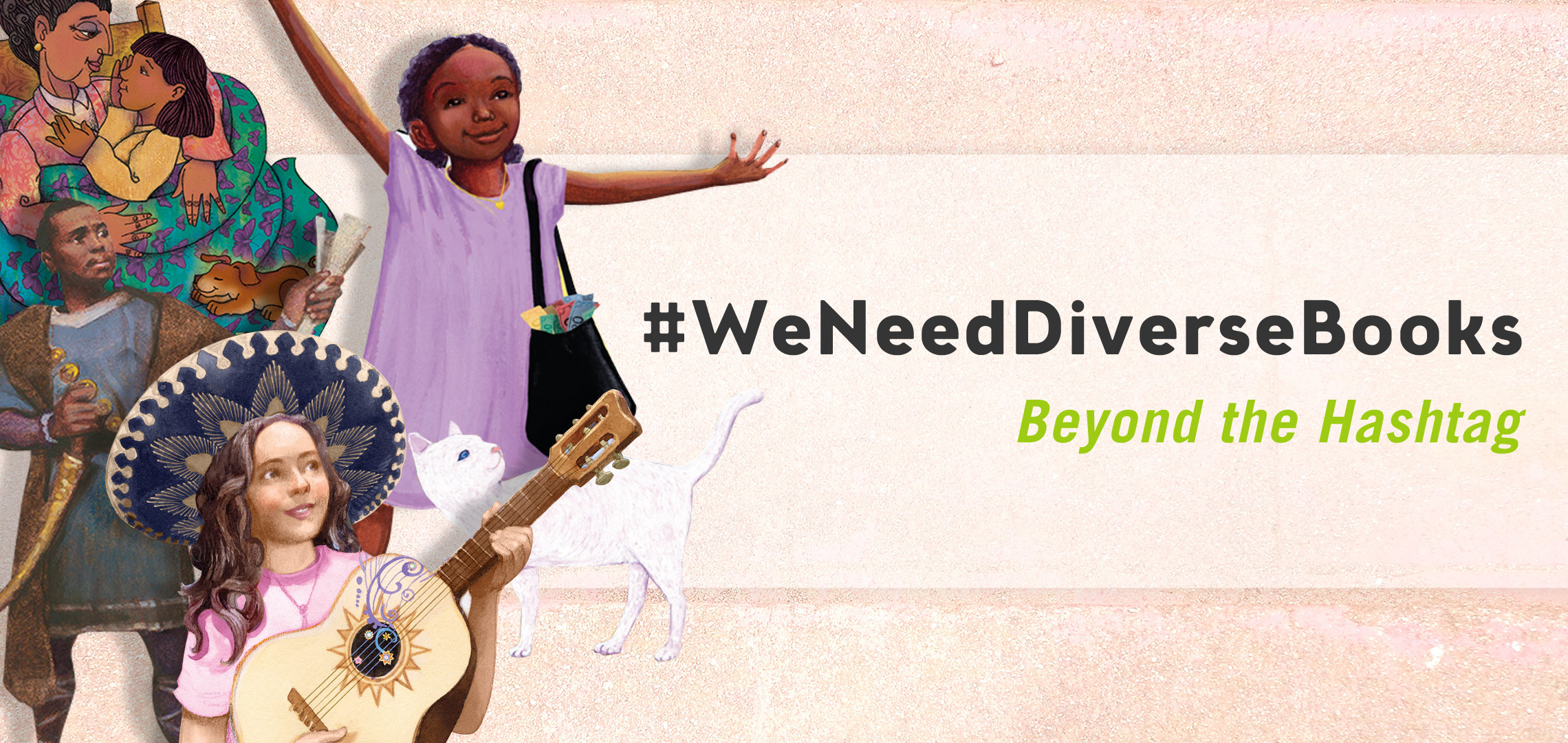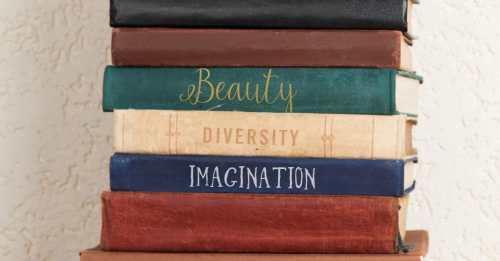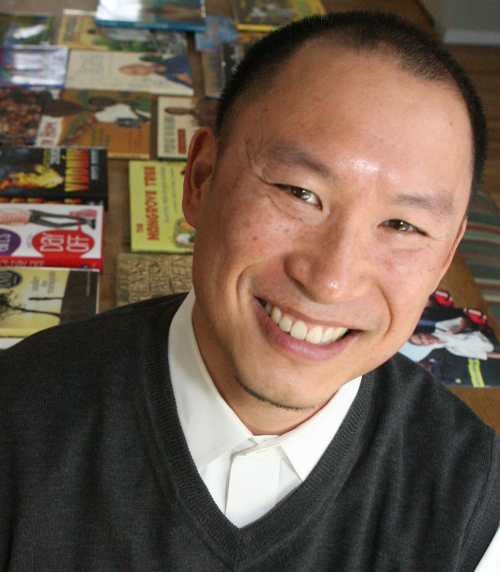#WeNeedDiverseBooks: Beyond the Hashtag

When Asian American Jason Low was a child, the only characters in children’s books that were allegedly Asian were cartoons of stereotypes that were deeply offensive to him. When he grew up to become publisher of Lee & Low, which specializes in children’s books, he decided that a central part of his company’s mission would be to represent characters as diverse and multicultural as his readers. It’s this focus on making diversity more than just a buzzword that contributed to the decision to make Lee & Low Foreword Reviews’ Independent Publisher of the Year, along with the fact that they produce beautifully designed and written kids’ books. FTW spoke with Low about the ways in which Lee & Low is not only producing diverse books but attempting to quantify the problem to help the industry improve. Read the interview below the news.
First, the News

Beauty, Diversity, and Imagination: At the American Library Association’s Annual Conference in San Francisco, we presented our 2014 INDIEFAB awards. Take a look at our announcement and list of winners. The winners of the Editor’s Choice Awards for Fiction, Nonfiction, and Publisher of the Year each emphasize one of the three qualities of the “indie spirit”: beauty, diversity, and imagination. Here is how indies use their freedom to experiment and give these qualities more of an edge.
IngramSpark Ignites Success: As often happens, a distributor’s fairly simply idea of offering a one-stop platform for print and digital editions soon evolved into something more. Beyond the envisioned base of independent publishers and authors, libraries, bookstores, and others have taken advantage of IngramSpark and the company has found success in unexpected places.
Dog Days: We call them man’s best friend, but some (dogtologists, perhaps?) put their pets’ well-being far above their own. If you bawled your eyes out reading Marley and Me or have Lady and Tramp on your TV on repeat—or even if you just love a good game of fetch in the park—then you’ll surely admire any of these glorious books for dog lovers.
The Rad and the Radical: The economic crisis in Greece is taking its toll all across Europe. But one good thing has come out of it: increased attention on radical political books of the indie persuasion. The Guardian has the details.
Boom! Pow! Comics!: Barnes & Noble has announced that it has doubled the size of the graphic novels section in all their stores nationwide because of the format’s growing popularity. Holy smokes, Batman!
Featured Reviews of Week
Rockin’ the Boat: 50 Iconic Revolutionaries by Jeff Fleischer. “The book covers the life and accomplishments of fifty radicals throughout history. Although many have since earned mainstream status, each was an underdog in their time who found serious fault with the status quo. Reviewed by Melissa Wuske.
400 Calories or Less with Our Best Bites by Sara Wells and Kate Jones. “Over 65 recipes for such temptations as Roasted Asparagus and Mushroom Pasta in Lemon-Cream Sauce, Burrito Pie, and PB&J Ice Cream Cookie Sandwiches, all surprisingly 400 calories or less.” Reviewed by Rachel Jagareski.
Conscious Coupling: Positve Insights for Long Lasting Relationships Shared by Two Divorce Mediators by Don Desroches and Dana Greco. “The daunting task of choosing just the right volume to address specific and often personal and intimate issues that arise in committed adult relationships just got a whole lot simpler.” Reviewed by Pallas Gates McCorquodale.
Crestwood Hills: The Chronicle of a Modern Utopia by Cory Buckner. “Brimming with beautiful photographs and renderings, this book is a visual journey as much as a historic record of this community.” Reviewed by Christine Canfield.
Haymaker by Adam Schuitema. “This is not a sports novel. Schuitema has crafted a description of contemporary small-town life that is easily transferred anywhere in the United States.” Reviewed by John Senger.
Jason Low
Tell us about the Diversity Baseline Survey. What will it measure and what do you hope to do with the data?

Jason Low
The survey will give us a peek at where we are now as an industry when it comes to diversity. We have a hunch that there is a lack of diversity in publishing, but we don’t know to what extent. Having a baseline number will give us a statistic that we can work toward improving. Businesses use numbers to gauge their performance; the same methodology should be applied to issues such as equality.
How do you respond to critics who say that establishing ethnic or gender quotas in literature is a kind of “reverse discrimination”?
Quotas are about hiring and acquiring based solely on race. Lee & Low is about acquiring great stories. We are also about a balanced and fair representation of all people in literature, so books accurately reflect the world we live in today. The overwhelmingly white world of children’s books is an unreality.
“Reverse discrimination” as a concept is a fallacy. When a society like ours so clearly favors white culture over that of people of color, the idea doesn’t make any sense. If we’re not proactive, people will continue to be left out. It’s not about excluding people. It’s about bringing everyone in.
#WeNeedDiverseBooks is a popular hashtag among followers of social media. Lee & Low is one of only a few publishers doing something about it. How can an individual author or small publisher help?
While individual authors should stay true to telling authentic stories, publishers need to expand their own offerings to include diverse books. Despite the popularity of digital devices, books are still a potent medium. Cultural relevance isn’t about being politically correct. It’s about staying relevant to a growing, diverse readership that is looking for content they can connect to in a meaningful way.
How important is it for a child to read about a character who looks like him or her?
Early on, when I was growing up, the only book with Asian characters that was read aloud in my classroom was The Five Chinese Brothers. The book’s illustrations depicted Asians as slit-eyed, yellow-skinned, and identical to one another. There is a good possibility that this book may have reinforced the racist belief that “all Asians look alike.” Needless to say, this book put me off reading for years. My point is, inclusion, when done improperly, can be damaging. At the same time, not seeing yourself in a book is a childhood experience that generations of children of color still experience today.
Author Junot Diaz has a great quote related to how important it is for children to see themselves: “[I]f you want to make a human being into a monster, deny them, at the cultural level, any reflection of themselves. And growing up, I felt like a monster in some ways. I didn’t see myself reflected at all.”
Name some upcoming titles you’re particularly excited about.
We have six new books this spring, and we are excited about them all:
Ink and Ashes by Valynne Maetani, Finding the Music / En pos de la música by Jennifer Torres and illustrated by Renato Alarcão, Ira’s Shakespeare Dream by Glenda Armand and illustrated by Floyd Cooper, Maya’s Blanket / La manta de Maya by Monica Brown and illustrated by David Diaz, Poems in the Attic by Nikki Grimes and illustrated by Elizabeth Zunon, and Sunday Shopping by Sally Derby and illustrated by Shadra Strickland.
Can you name a book that had a great influence on you when you were a child?
The most influential books I read growing up were comic books. More than anything, I wanted to grow up to be a superhero.
